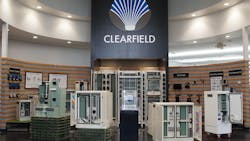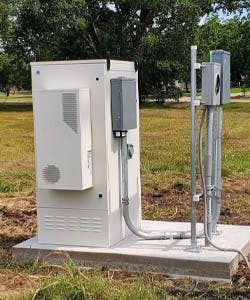Cheri Beranek, President & CEO, Clearfield
Topic: Operational Realities
The key to controlling OPEX is improving network life cycle management for com- plex fiber, and legacy networks in a cost-efficient manner. How is Clearfield ensuring network service providers can reduce their OPEX?
Cheri: Clearfield designs products that reduce the complexity of installing and maintaining fiber networks. Fiber technicians installing the final connection to the home get measured not only on first dispatch resolution (quality) but also on the time it takes to complete the order (speed). In the past, meeting these key metrics relied solely on the skill of the technician. However, Clearfield innovations like the SeeChange® terminal and hardened connector system allow less skilled techs to meet these operational objectives using a 100% plug-and-play approach with minimal technical training.
Topic: Edge Compute
Cheri: Moving the processing functions of a data center further out to the edge of the net- work makes technical sense to reduce latency but it requires three things—a secure location (both logically and physically), sufficient power, and an abundance of fiber. The active cabinet portfolio from Clearfield satisfies all three and is uniquely designed with a fiber first approach in the outside plant environment with the ability to host compute resources directly in the cabinet serving as an aggregation point of multiple fiber feeds. These active cabinets are engineered to scale up in size to meet the needs within any locale—eliminating the need for brick-and-mortar buildings and huts. This allows BSPs to place the compute resources where they are needed the most—closest to the origin of the traffic source.
Topic: Fiber Field Realities
Time, talent, and cost are the enemies of BSPs as they work to deploy fiber deeper in the last mile. What are the best ways to help them defeat those enemies?
Cheri: Flexibility, a willingness to adopt new methods of fiber deployment, and training are the keys to success for BSPs deploying fiber. For example, the FastPass™ method from Clearfield utilizes in-cassette splicing within the fiber distribution hub (FDH) cabinet in- stead of using the legacy method of a splice case collocated with this FDH. The simple adjustment of moving the splicing function from the splice case in the vault into the cassette that is housed in the FDH cabinet saves enough installation time to double the number of cabinets placed in a given time period and meet or exceed BSP “Homes Passed” goals. BSPs can also benefit from Clearfield College training curriculum designed to educate students about fiber technology and allow them to obtain certifications on how to install fiber products.
Flexibility and a willingness to adopt new methods of fiber deployment are the keys to success. For example, the FastPass™ method from Clearfield utilizes in-cassette splicing within the FDH cabinet instead of using the legacy method of a splice case col- located with this FDH. The simple adjustment of moving the splicing function from the splice case in the vault into the cassette that is housed in the FDH cabinet saves enough installation time to double the number of cabinets placed in a given time period.

